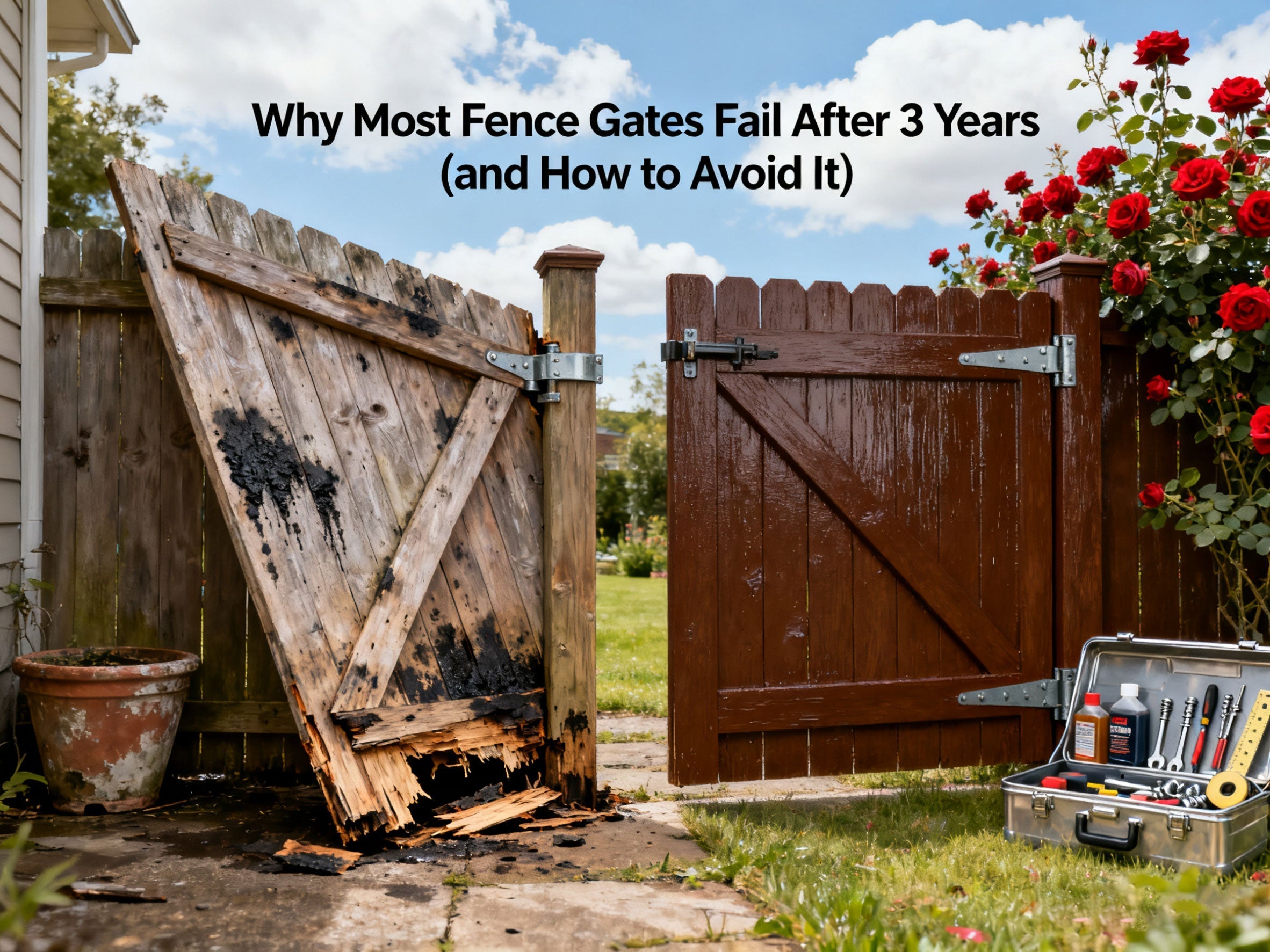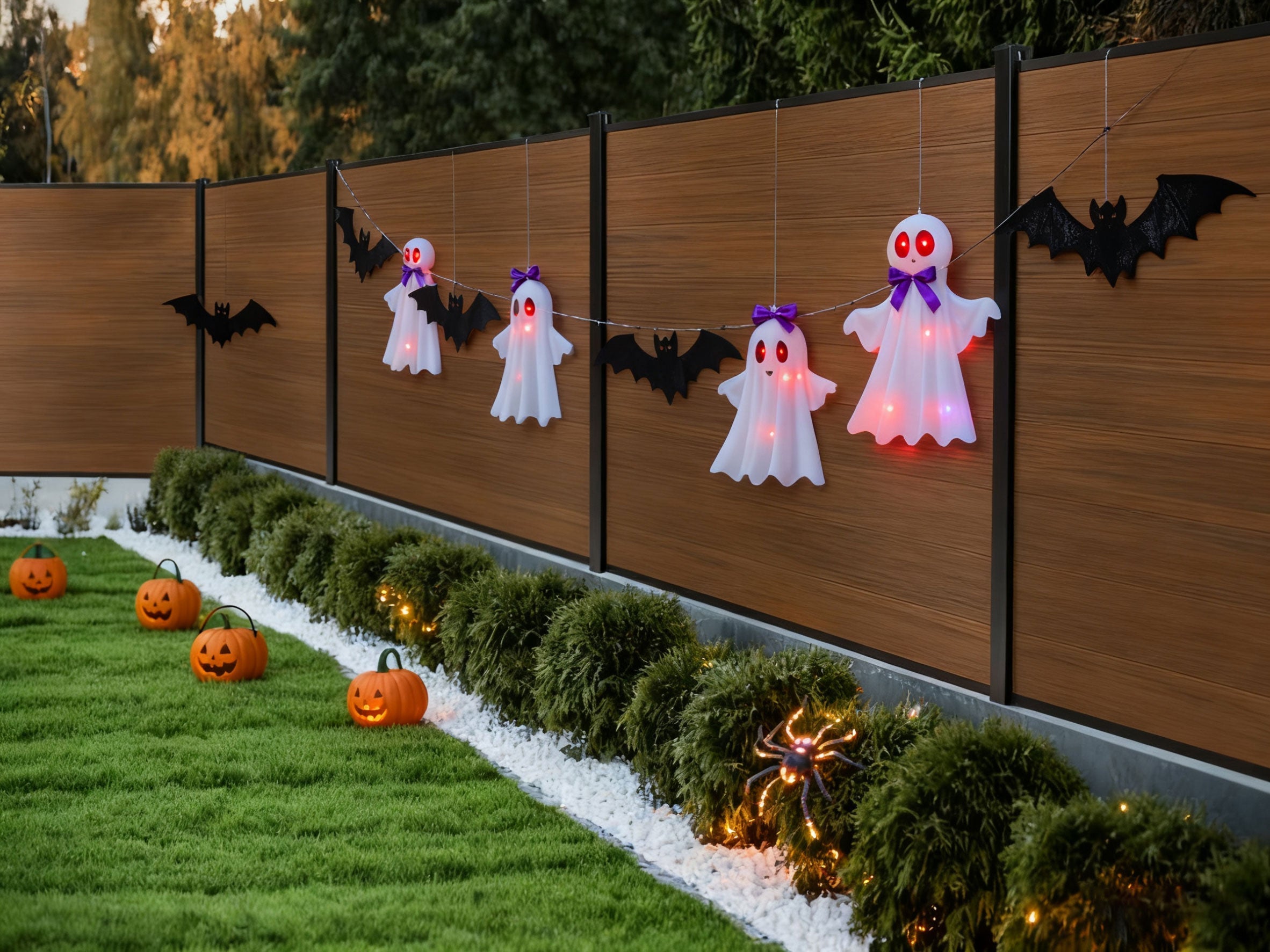
Why Most Fence Gates Fail After 3 Years (and How to Avoid It)
Introduction
Ever noticed that your fence gate starts sagging, squeaking, or looking old just a few years after installation? You’re not alone. Homeowners often face the frustration of replacing or repairing gates far sooner than expected. In fact, many traditional fence gates show signs of failure within the first 3 years—whether it’s sagging hinges, rotting wood, or rusted frames.
But here’s the good news: most of these problems are preventable. In this guide, we’ll explore the common reasons why fence gates fail, and more importantly, how to avoid them with the right materials, installation, and maintenance practices.
Common Reasons Fence Gates Fail
1. Poor Material Choices
-
Wood: While traditional and affordable, wood gates are highly vulnerable to rot, warping, and termite damage. Rain, snow, and humidity accelerate decay, often leading to cracks and sagging.
-
Steel/Iron: Strong but prone to rust, especially in humid or coastal regions. Without consistent repainting or protective coating, corrosion shortens its lifespan drastically.
👉 In contrast, materials like WPC (Wood Plastic Composite) and aluminum resist these environmental stressors and last much longer.
2. Improper Installation
Even the best materials fail if installed incorrectly. Common mistakes include:
-
Weak hinge placement → causes the gate to sag.
-
Unstable posts → without a concrete foundation, posts shift as soil settles.
-
Poor alignment → improper spacing between gate and ground leads to friction and damage.
3. Lack of Maintenance
-
Wooden gates need regular sealing or painting—skip it for a year, and you’ll see cracks or discoloration.
-
Metal gates require anti-rust coatings to withstand weather exposure.
-
Neglecting small repairs (like a loose hinge) can snowball into full gate replacement.
4. Weather & Environmental Factors
-
Cold climates: freeze-thaw cycles cause soil movement, destabilizing posts.
-
Hot climates: UV rays dry and crack wood.
-
Coastal regions: salt air accelerates corrosion on steel and iron gates.
👉 A gate that looks perfect in year one can look worn out by year three if exposed to harsh weather without protection.
How to Extend the Lifespan of Your Fence Gate
1. Choose the Right Materials
The material is the foundation of durability. Here’s a quick comparison:
| Material | Average Lifespan | Maintenance | Cost Over 10 Years |
|---|---|---|---|
| Wood | 3–7 years | High (painting, sealing) | High due to replacements |
| Steel | 5–10 years | Medium (anti-rust care) | Medium |
| Aluminum | 15–20 years | Low | Low |
| WPC (Composite) | 20+ years | Very Low (no sealing) | Lowest overall |
👉 WPC and aluminum gates clearly outperform traditional materials. They are weather-resistant, eco-friendly, and require minimal upkeep.
2. Proper Installation Matters
-
Set posts in concrete to prevent shifting.
-
Use heavy-duty, rust-resistant hinges.
-
Maintain at least 2–3 inches of clearance between the gate and the ground to avoid drag.
When installed correctly, a quality gate should stay aligned and functional for decades.
3. Regular Maintenance
Even durable gates benefit from periodic checks.
Annual Maintenance Checklist:
-
Tighten screws and hinges.
-
Wash gate surface with mild soap and water.
-
Inspect for cracks, chips, or rust.
-
Apply protective coating if wood or metal.
👉 The advantage of WPC and aluminum is that they need little more than an annual cleaning.
Practical Tips to Prevent Early Gate Failure
-
Match gate material to climate: aluminum for coastal regions, WPC for wet/humid climates, etc.
-
Don’t cut corners on hardware: invest in quality hinges and latches.
-
Plan for the long term: a slightly higher upfront cost on composite or aluminum will save thousands in repairs and replacements.
-
Check warranty: choose gates backed by a 10–20 year warranty for peace of mind.
Conclusion
Most fence gates fail within 3 years due to poor materials, incorrect installation, and lack of maintenance. The solution is straightforward:
-
Invest in durable materials like WPC or aluminum.
-
Ensure proper installation with sturdy foundations.
-
Follow a simple maintenance routine.
By doing this, you can avoid the hassle of constant repairs and enjoy a gate that stays strong and attractive for decades.
👉 Looking for a long-lasting, low-maintenance fence gate?
Check out our full range of WPC & Aluminum Gates — backed with a 20-year warranty and free US shipping.
FAQ
1. Why does my fence gate sag?
Most often, it’s due to weak hinges, poor alignment, or shifting posts.
2. What is the longest-lasting fence gate material?
Composite (WPC) and aluminum gates last 2–3 times longer than wood.
3. Do I need to paint or seal a composite gate?
No. WPC gates are naturally weather-resistant and require almost no maintenance.
4. Can I install a fence gate myself?
Yes, especially DIY-friendly models. Just make sure to set posts in concrete and use proper tools.



Leave a comment
This site is protected by hCaptcha and the hCaptcha Privacy Policy and Terms of Service apply.